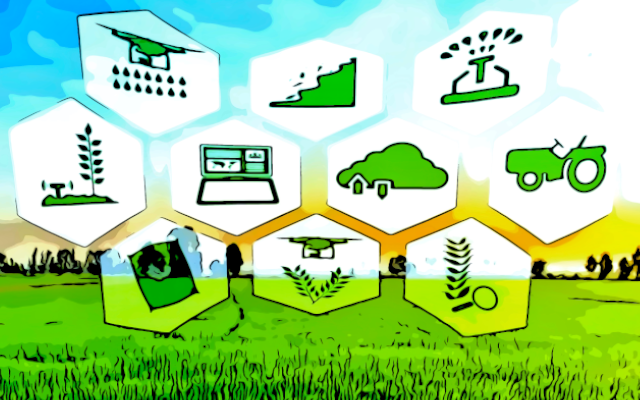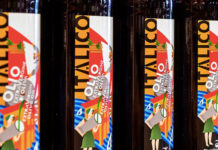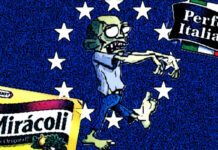Italian Agriculture 4.0. Manifesto and scenario are presented atInnovation Day, 5/28/20, streamed. Under the direction of Coldiretti, Filiera Italia and Bonifiche Ferraresi. Useful insights to follow.
Food spending and digital innovation
The lockdown imposed by Covid-19, as it turns out, has thrown the retail web platforms in Italy into crisis. The growth of online food sales has peaked at +178% in recent weeks, although containment measures had already reached phase 2.
Italian consumers, having overcome their historical hesitations toward foodecommerce , have learned to plan their shopping on a weekly basis. Without giving up fresh and ultra-fresh foods, which play a key role in the Mediterranean diet. With the advantage of saving time and queues, as well as the convenience of home delivery.
The next step will be the use of new devices-not only smartphones, but also smart speakers such as Google Home and Google Assistant, Alexa and Echo (Amazon), and Apple HomePod-to learn about products and order groceries, as well as for home automation and entertainment. In a path of interactive communication, already introduced for years by IT(Information Technology) giants, which it is hoped will soon be enriched by tailor-made applications, to ensure the purchase of 100% Made in Italy products from short supply chain, fair and sustainable.
Italian agriculture 4.0
Italian agriculture 4.0 is already a reality in the making. Precision agriculture solutions and services show double-digit growth, with revenues of €450 million (2019, up 22 percent from 2018). Investments focus on production monitoring and control systems (49 percent), equipment and management software (34 percent) area mapping and data collection technologies (14 percent. Coldiretti processing of Smartagrifood data).
Technology can help decrease the ecological footprint of production by reducing agronomic inputs and making processes more efficient. With optimization of field work, increased yields and marginality, and mitigation of fragilities (thanks in part to the availability of agrometerological indices and the prediction of their changes). As well as offering new guarantees in terms of origin, safety and quality, and sustainability.
The adoption of technology ‘in the field’ can enable the collection-and real-time sharing-of all useful data to qualify suppliers on the various distribution channels. And ensure that consumers can make effectively informed choices. In line with, among other things, Sustainable Development Goal (SDG) no. 12, in UN Agenda 2030. Sustainable production and consumption, indeed. Without neglecting the opportunities for transparency in the value chain, too long invoked only in words, which are essential to ensure fair remuneration for the primary agricultural supply chain.
Interactive communication from farm to fork is also an engine of social innovation in both aspects of:
– direct and disintermediated sales, or nearly so. Freeing the Italian food supply chain from Amazon’s global monopoly, which drains commissions out of the market compared to industry practices. Without contributing to tax revenues on income produced in Italy (beyond a paltry web tax, 3%, introduced only starting in 2020). To transfer our savings abroad,
– To stimulate the evolution of the agri-food market based on demands from consumAtors(consumer demand pull), rather than pressures from distribution(supply push). From supply chain to value chain, that is. On a path of collaboration and shared growth that can redistribute value and wealth between those who produce and those who consume.
The Manifesto of Italian Agriculture 4.0
The Manifesto of Italian Agriculture 4.0, launched and promoted by the participants of Innovation Day 28.5.20, consists of 6 key points:
1) Accelerate the digital transition. Rewarding the adoption of precision technologies, in agriculture and animal husbandry, with projects suitable for preserving the unique characteristics of the Italian territory,
2) Provide support to farmers to facilitate agronomic choices in real time,
3) To promote widespread awareness and culture, including among consumers, about the origin and characteristics of agri-food products. Adopting digital technologies to ensure traceability, safety and quality,
4) Encourage innovative economic models that provide for fair distribution of value throughout the supply chain,
5) Support the development of digital sales channels for national short supply chains,
6) To develop patents based on made-in-Italy technologies and standards, serving the Italian agribusiness supply chain, to improve its efficiency and effectiveness.
System needs
Vincenzo Gesmundo, secretary general of Coldiretti, stresses the need to democratize digital technologies. An essential step to ensure their effective usability by the millions of farms that make up the Italian production chain. The so-called ‘exponentiality’ of some innovations, of disruptive effect on their target markets (e.g., the Amazon, Airbnb, etc.), effectively makes many strategies, including in politics, obsolete. The European Commission’s own Communication ‘Shaping Europe’s Digital Future,’ dated 19.2.20, is in danger of being overtaken by events.
Pragmatism also requires considering-in the opinion of the writer (Dongo)-three systemic needs:
– publicblockchain. Only authentic public blockchain systems (ex.
Wiise Chain
), as they are distributed and decentralized, can and should guarantee digital and incorruptible notarization of data,
– interoperability. The system must be accessible and interact with the various ERP(enterprise resource planning) systems used by the various operators. So as to make possible the participation and collaboration of all actors in the supply chain, whatever software is used (from Ms or Open Office to SA400, SAP, etc.). Without forcing all those participating in the network to bear the costs of adapting their databases to a closed system,
– global standard
. GS1, the only authorized bar code issuing body, developed the GS1 Digital Link in 2018. A web address built according to international standards, inter-operating with all kinds of data carriers (one- and two-dimensional barcodes, e.g., QR codes, RFID tags and other technologies). Scanning this code with a smartphone, or other devices provides access to all the information encoded in GS1’s global standards. From the GTIN(Global Trade Item Number) embedded in the classic barcode to the product sheet on the manufacturer’s website or ecommerce portal , etc.
Technology needs
Technological innovation will soon become part of supply chain agreements, in a logic of vertical integration(from farm to fork) and horizontal integration (of cooperation between supply chains, including sharing technologies and resources). Italian agribusiness today faces two urgent technological needs, as highlighted atInnovation Day by Antonio Samaritani, CEO of
Abaco Group
:
– ultra-wideband coverage of all rural areas, a prerequisite for digital applications in agriculture throughout Italy,
– an Agriculture 4.0 platform, where to collect and manage data on weather and temperature forecasts, soil fertility, water stress, etc.
The Demetra application was created by Abaco Group for the Member Portal of Coldiretti, Europe’s leading agricultural confederation by number of members (1.6 million, accounting for 70 percent of agricultural businesses registered with Italian chambers of commerce). And it could form the basis for the digitization of Italian agricultural enterprises, where to graft vertical supply chain projects.
Italy supply chain
The agrifood supply chain in Italy-from fields to table, via industry, distribution and catering-contributes 25 percent of the national GDP (€ 538 billion) and 3.7 million people employed. Added to this is the € 11.4 billion turnover of agricultural machinery (of which 70 percent is export. FederUnaComa 2019 data) and the €5.4 billion of the machinery, plant and equipment industry (66 percent export. Assofoodtec 2019 data).
Luigi Scordamaglia, managing director of Filiera Italia, spoke atInnovation Day highlighting the need to invest in technology and IT for ‘a healthier and more sustainable agribusiness,’ in line with the European Farm to Fork (f2f) strategy. Preserving the relationship with nature, also recalled in the EU Biodiversity Strategy, and quality that is rooted in traditions and territories.
Digitization, environmentally sustainable packaging, and by-product valorization in a circular economy logic are areas of development to be considered. So is research into the health properties of natural ingredients. Without debasing the role of agriculture with technocratic ‘solutions’ in the hands of a few, such as the
Lab meat
.
Federico Vecchioni, CEO of Bonifiche Ferraresi, in turn insists on the need to combine tradition and innovation, ‘aware that the real value lies in the hands of farmers and is the origin of the product.’ The platform of Bonifiche Ferraresi now represents the most important example of the introduction of precision agriculture, over an area of more than 8,500.
Innovation, Italian startups featured
TheInnovation Day on 5/28/20, in the second part, showcases some innovative startups and companies serving Italian agriculture 4.0.
Agrorobotica (Tuscany) presents SpyFly, a ‘robotic trap’ that attracts and captures insect pests through sexual pheromone calls, recognizes them through algorithms, and reports their concentration on crops.
Bluetentacles
(Trentino),
Hydroplan
(Lazio) and
Revotree
(Lombardy) are proposing automated and intelligent irrigation solutions that can provide unimaginable water savings compared to traditional management.
Cynomys
(Liguria) has developed IoT(Internet of Things) solutions for monitoring environmental conditions in stables (e.g., temperature, humidity, carbon dioxide, methane, ammonia, hydrogen sulfide, light).
BS-company
(Emilia-Romagna) offers a variety of management solutions.
Horta
(Emilia-Romagna) is a spin-off of the Catholic University of Piacenza and Cremona with more than a decade of experience on research and development of innovative solutions for vegetable agricultural production. Precision agriculture and artificial intelligence dedicated to different crops. Xfarm (Lombardy, Canton Ticino) is a startup specializing in building ad hoc decision-making platforms.
Ono exponential farming
(Veneto) automates indoor crops from seed to harvest.
Xnext
(Lombardy) offers innovative solutions for in-line inspection of products, using X-rays, microelectronics and artificial intelligence.
Edoapp (Emilia-Romagna), on the other hand, is an app aimed at consumers. Who, by scanning the barcodes on the labels, can receive information on the suitability of individual products to compose a healthy and balanced diet, also taking into account the presence of unsustainable raw materials (e.g., palm oil) and individual needs (e.g., food allergies and intolerances).
Innovation Day
, 28.5.20. The entire conference on YouTube.
Dario Dongo and Pier Luigi Romiti









